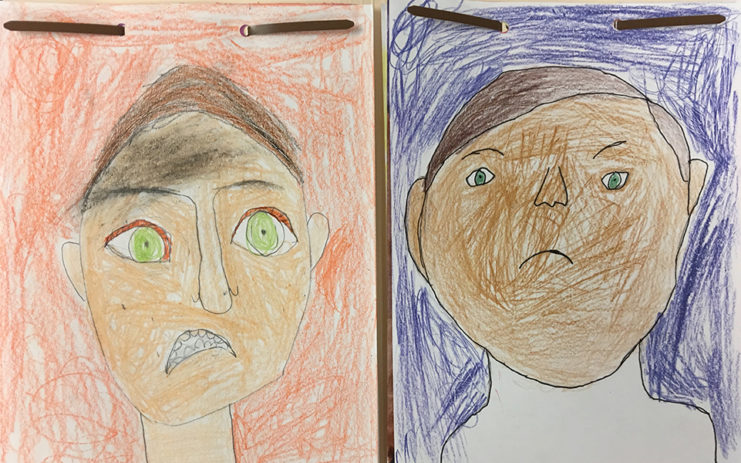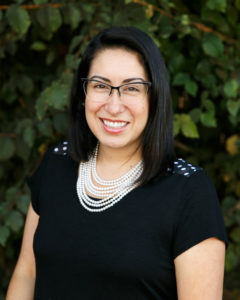
Listen to Teach, Partner to Learn
Don Refuses to Read
December rolled around and the day of the writing celebration finally came. Parents, grandparents, aunts, and godmothers came to our second-grade classroom to hear their children read their writing. As I walked around the room, it seemed as if everyone was enjoying themselves. I saw lots of smiles and cuddles. Suddenly across the room I noticed Don, separated from his group, talking with his grandma. His arms were crossed and he shook his head as his grandma whispered to him. When I checked-in with Don, I learned that he had refused to read his writing. I assured him that he had a great story. I offered to read his story to his group. Grandma offered to read it to the group. He wasn’t willing to let it be heard.
Don is a quiet boy. He comes alive with his friends at recess and will easily share and talk with a partner. He’ll even share out in class when called on, but will not raise his hand of his own accord. In a self-portrait early in the year, he drew himself with a frown.
Don never ended up reading his story out loud. In the days and weeks that followed our writing celebration, other students opened up about how nervous they had been to read their stories. I wondered how I could support them to be as aware of and proud of their progress as I was.
Listening to My Students
My school district partners with Mills Teacher Scholars, a professional learning organization that facilitates collaborative inquiry for educators. This year I participated in a Social and Emotional Learning inquiry group. Using our district’s Social and Emotional Learning Framework, we collaborated to understand how to develop our students’ SEL competencies in support of their academic progress. Of the five SEL competencies, I was most curious about self-awareness. How aware were my anxious writers of their strengths and challenges? How could I help them leverage that awareness into success in my classroom?
I brought the story of Don to my Mills Teacher Scholars inquiry group. My colleagues helped me think of questions that I could ask Don in order to better understand his feelings and experiences with writing and sharing. I decided to give a survey to all of my students, including Don, with the following questions:
- Do you feel proud of yourself as a writer? Why?
- Do you like writing? Why?
- What does a good writer do?
I was surprised to learn that about half the class believed that good writers write lengthy stories and use good handwriting. This data inspired me to lead a whole-class conversation about how my students viewed writing and themselves as writers. After our discussion, those who believed they had to write a lot to be considered a good writer started seeing things differently. Instead, their understanding of good writing shifted to focus on the craft of writing, like using sensory words and showing rather than telling.
Adapting My Teaching To Meet My Students’ Goals
Taking our new shared understanding of what writers do, I invited my students to make writing goals for themselves. I met with every student one-on-one or in pairs and asked them to share their strengths and challenges as writers. In those intimate meetings I realized how self-aware they were about their learning, and how that awareness could lead directly to changes in my teaching.
Don and I had a 20-minute conversation. In that time he told me that he preferred to share with one other person and no more than four. He didn’t like to share in front of the class because he didn’t like people looking at him. He thought of some ways he could successfully share in front of a large group, like covering his face with his journal, covering only his eyes with his journal and exposing his mouth, or memorizing his story to be able to share. He was even open to the idea of sharing his story while standing behind his classmates, so they wouldn’t be facing him! Don’s self-awareness of what he wanted to work on and what would work for him made me aware of opportunities to help him proudly share his writing in our classroom.
The Power of Listening
Through this inquiry, I learned how inviting students to be self-aware of their challenges and the strategies that work for them helps me to be a better teacher. Going forward I want to remember these key takeaways:
- Build shared understanding with students about what success looks like. Before I asked them, I hadn’t realized how many of my students thought that good writing meant filling up the page.
- Make time for one-on-one conversations with students about their learning goals. My students’ sharing with me what they wanted to work on and how they thought they could be successful made me more aware of their goals, which allowed me to better nurture their needs.
- Find a supportive community of other teachers who provide focus and accountability. The day-to-day distractions of a school year make it easy to get pulled away from our own goals as teachers. Having a community of teacher learners who really listen to me enables me to listen to my students and support them to be the best learners they can be.
 Stephanie Neira Vollmer has been teaching for the past 11 years. During this time, she has taught in public and private school settings, working with students from preschool age to the 3rd grade. She obtained her teaching credential/Master’s degree from Mill’s College and is currently teaching at Peralta Elementary in Oakland, California. Stephanie loves to see the “aha” moment, when her students comprehend an idea in a new light and their faces light up with understanding. Along with her passion for encouraging young minds, Stephanie spends her time surrounded by her family, dancing, practicing photography and sewing.
Stephanie Neira Vollmer has been teaching for the past 11 years. During this time, she has taught in public and private school settings, working with students from preschool age to the 3rd grade. She obtained her teaching credential/Master’s degree from Mill’s College and is currently teaching at Peralta Elementary in Oakland, California. Stephanie loves to see the “aha” moment, when her students comprehend an idea in a new light and their faces light up with understanding. Along with her passion for encouraging young minds, Stephanie spends her time surrounded by her family, dancing, practicing photography and sewing.
